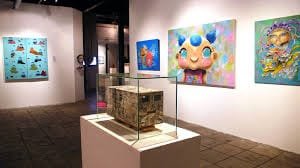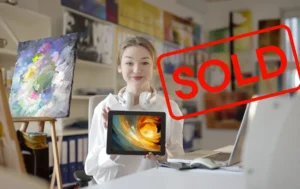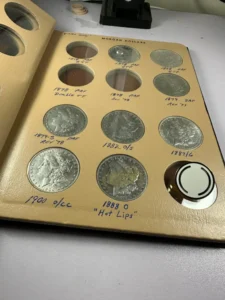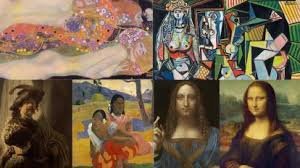In the world of art, the spotlight shines often on the creators: painters, sculptors, digital artists, and visionaries who shape the visual narrative of our time. However, lurking behind the canvas is an equally powerful force: the art collector.
These individuals, ranging from private enthusiasts to corporate buyers and institutional investors, not only appreciate art but shape its trajectory, value, and relevance. Their influence reaches far beyond gallery walls and seeps into cultural norms, economic dynamics, and even geopolitical currents.
As we dive into the world of art collectors, we will explore their impact on market dynamics, global art trends, how they shape artistic careers, and the critical roles they play in cultural diplomacy.
Who Are Art Collectors?
Broadly, art collectors are individuals or entities who acquire works of art for various purposes: personal passion, investment, philanthropy, or prestige.
They include:
Private Collectors: Individuals or families collecting art for personal enjoyment or legacy.
Institutional Collectors: Museums, universities, and cultural organizations that acquire art to preserve heritage and educate the public.
Corporate Collectors: Companies that collect art for branding, employee engagement, and diversification of asset.
Investor-Collectors: Those primarily concerned with the financial appreciation of art.
Despite their diverse motivations, all art collectors play a role in defining which artworks and artists receive visibility and validation.
Setting the Tides: How Collectors Drive Artistic Movements
Historically, collectors have had an outsized role in the trajectory of entire art movements.
The Medici family supported artists like Michelangelo and Leonardo da Vinci, influencing the Italian Renaissance.
Peggy Guggenheim championed abstract expressionists like Jackson Pollock and Mark Rothko, impacting American art in the mid-20th century.
Collectors shape movements through:
1. Strategic Acquisitions
When a high-profile collector purchases a work by an emerging artist, it sends a strong signal to the market. This can:
Elevate prices
Attract gallery attention
Prompt museum exhibitions
Launch or revive art movements
2. Curator’s Influence
Collectors influence:
Artist selection
Themes explored
Historical narratives presented
Their close ties with curators and gallerists give them control over how art is publicly interpreted.
3. Founding Private Museums
Examples include:
The Broad Museum (Eli Broad, Los Angeles)
Bourse de Commerce (François Pinault, Paris)
These institutions often set the cultural agenda and define what’s considered relevant.
The Power of the Purse: Economic Influence on the Art Market
Art collectors are the financial backbone of the global art ecosystem. Their spending affects:
1. Market Valuation
Auction houses like Sotheby’s, Christie’s, and Bonham’s use sales data to set price benchmarks.
Record-breaking purchases can boost entire genres or artists.
Example: Basquiat’s $110.5 million sale triggered a spike in demand.
2. Geographic Shifts
Collectors from:
China
The Middle East
Africa
Southeast Asia
…are influencing global art tastes and spotlighting regional art forms.
3. Trends in Media and Formats
Collector preferences are pushing artists toward:
Digital art and NFTs
Large-scale installations
Immersive experiences
Influencing Artist Trajectories
Collectors play an essential role in artist recognition and career growth.
1. Early Patronage
A collector’s acquisition can:
Boost visibility
Offer financial support
Open doors to industry players
2. Resale and Secondary Markets
Auction resales influence:
Market value
Public perception
Long-term legacy
But premature resale can destabilize value.
3. Private Commissions
Custom projects:
Provide financial stability
Allow creative freedom
Encourage artistic experimentation
Cultural Diplomacy and Global Perceptions
Beyond economics, collectors shape international cultural narratives.
1. Cross-Cultural Exchange
Collectors promote cultural understanding by:
Lending to international shows
Participating in cross-border exhibitions
Example: The Al Qasimi and Al Thani families support Arab art globally.
2. Preservation of Cultural Heritage
Collectors often preserve:
Endangered artifacts
Diasporic works
Though sometimes controversial, the goal is often protection from:
War
Neglect
Illicit trade
3. National Branding
Countries like Qatar use art investment to:
Promote cultural heritage
Establish global influence
Their museums serve as national identity statements.
The Risks and Criticisms of Collector Power
With great influence comes scrutiny.
1. Speculation and Flipping
Some collectors:
Buy young artists’ work
Resell quickly for profit
This can inflate markets and hurt the artist’s reputation.
2. Gatekeeping and Homogenization
When a few dominate:
Diversity suffers
Unconventional voices are silenced
Market viability outweighs artistic creativity
3. Ethical Concerns and Provenance
Concerns include:
Illegally sourced art
Colonial-era looting
Lack of transparency
Today, ethical collecting is under global scrutiny.
The Future of Art Collecting: Technology and Democratization
Art collecting is evolving with tech and shifting values.
1. Digital Collecting and NFTs
Platforms like:
OpenSea
SuperRare
Foundation
…enable decentralized art buying. NFTs and blockchain improve transparency and accessibility.
2. Online Marketplaces and AI Curation
Sites like:
Artsy
Saatchi Art
Artnet
…offer:
Global access
AI-powered recommendations
Market analytics
This reduces reliance on traditional gatekeepers.
3. Social Media and Collector Visibility
Platforms like Instagram allow collectors to:
Share collections
Influence trends
Build public personas
This increases transparency but may also commercialize the process.
4. Emerging Collector Demographics
Millennials and Gen Z prefer:
Socially conscious art
Environmental themes
Underrepresented voices
Their values are pushing the industry toward inclusivity.
Final Thoughts: The Silent Architects of Legacy
Art collectors are the invisible hands shaping artistic legacy.
They determine what gets remembered
They elevate voices through funding and visibility
They influence public access and discourse
As technology and globalization reshape the industry, collectors must balance:
Profit and passion
Ethics and influence
Preservation and progression
The best collectors don’t just build portfolios—they build platforms for artists to thrive.





